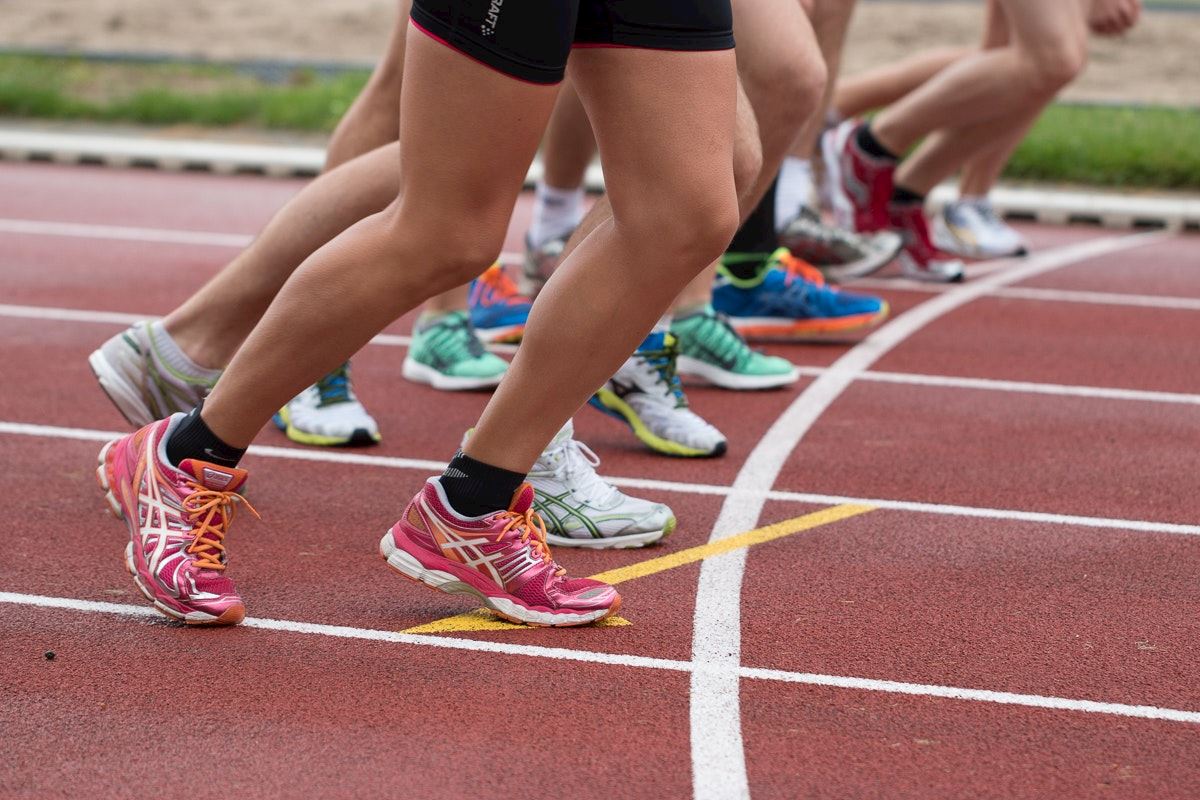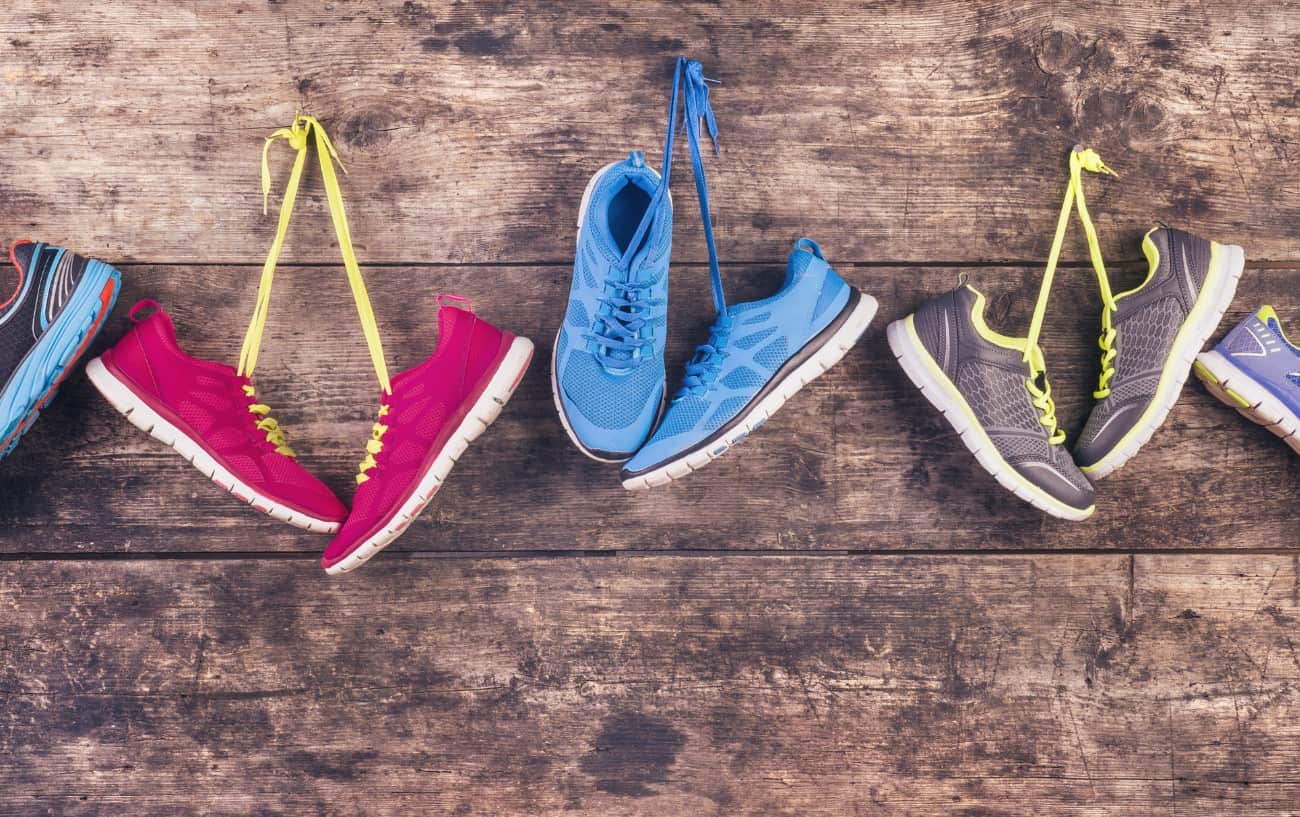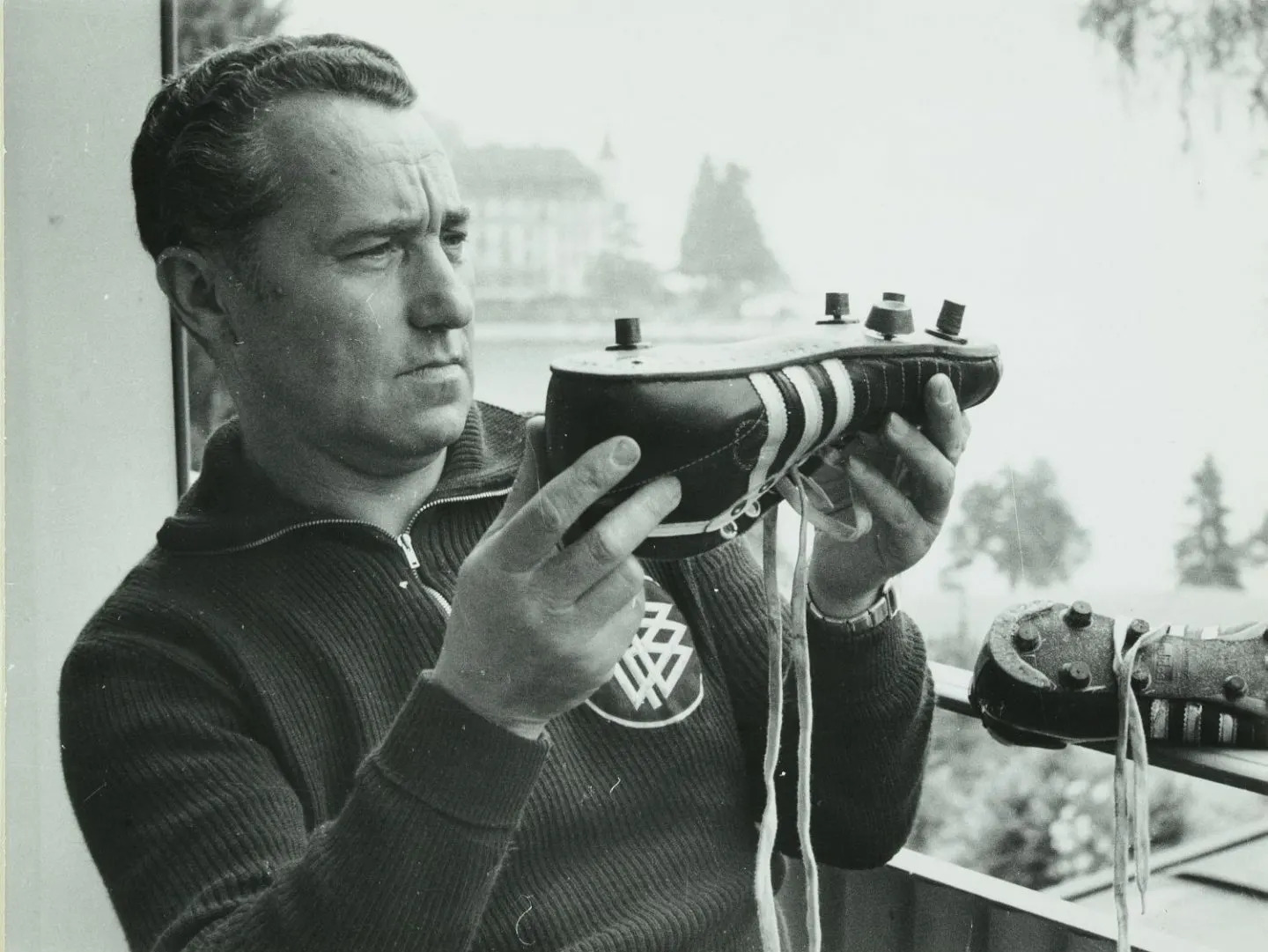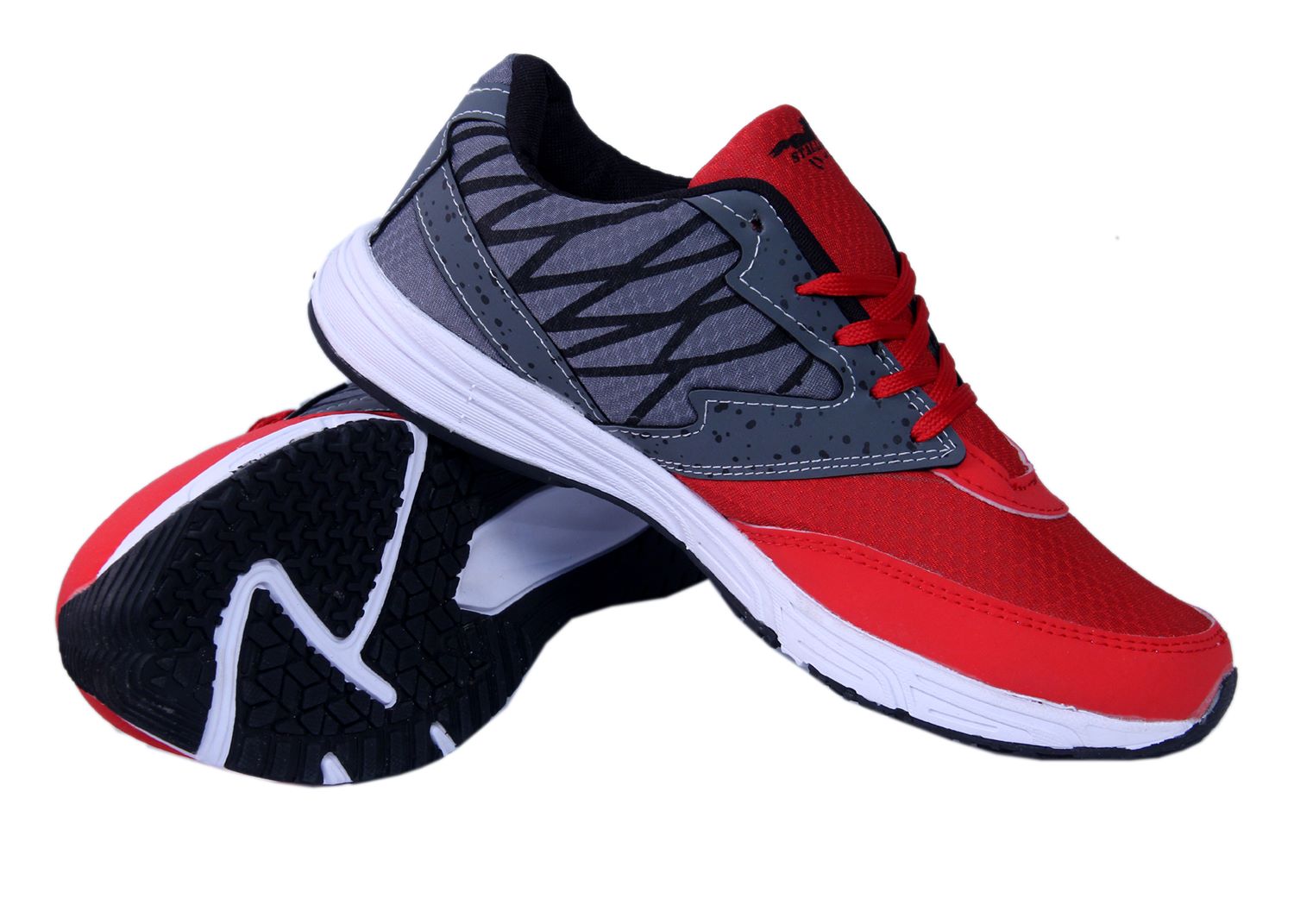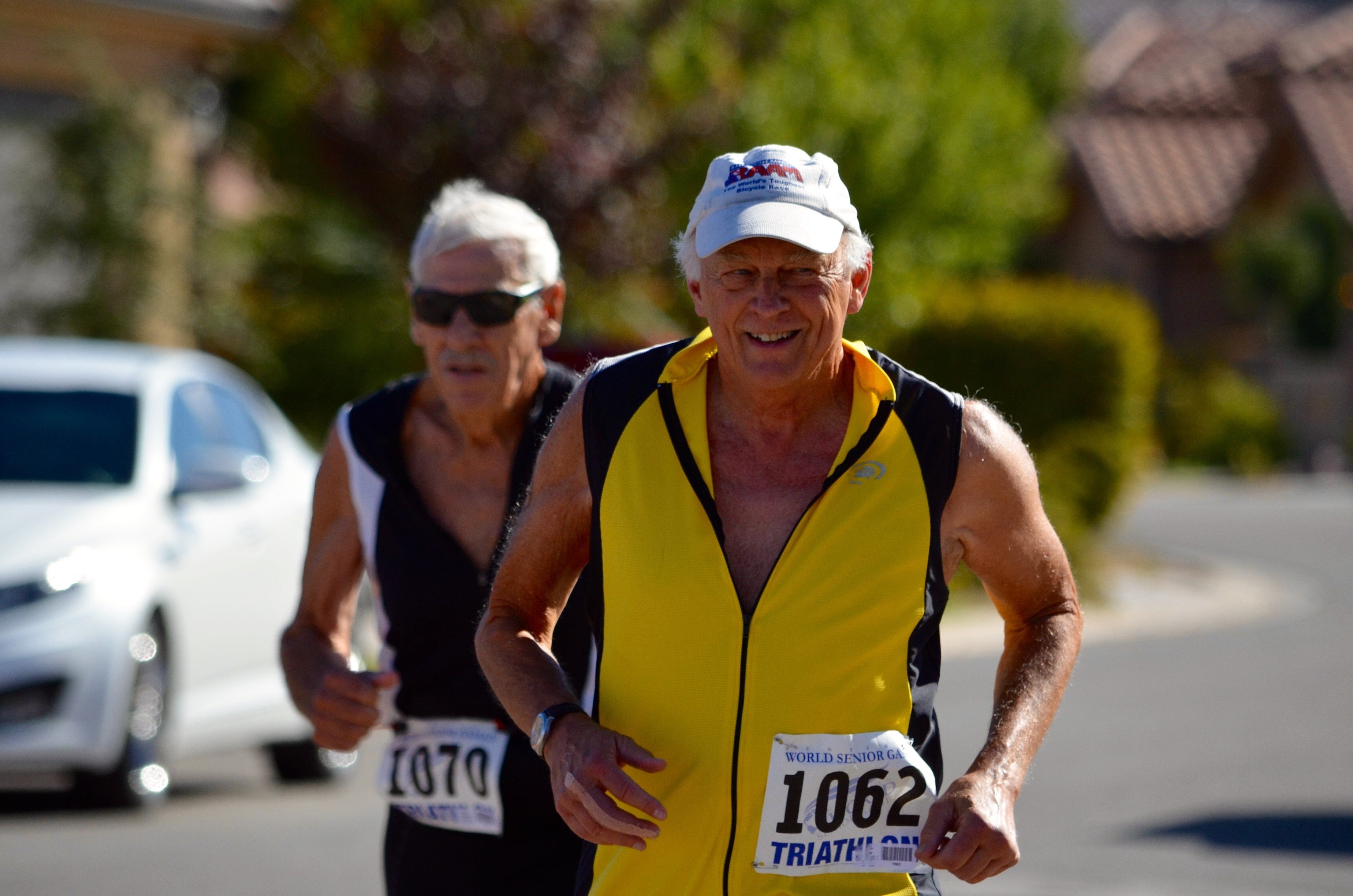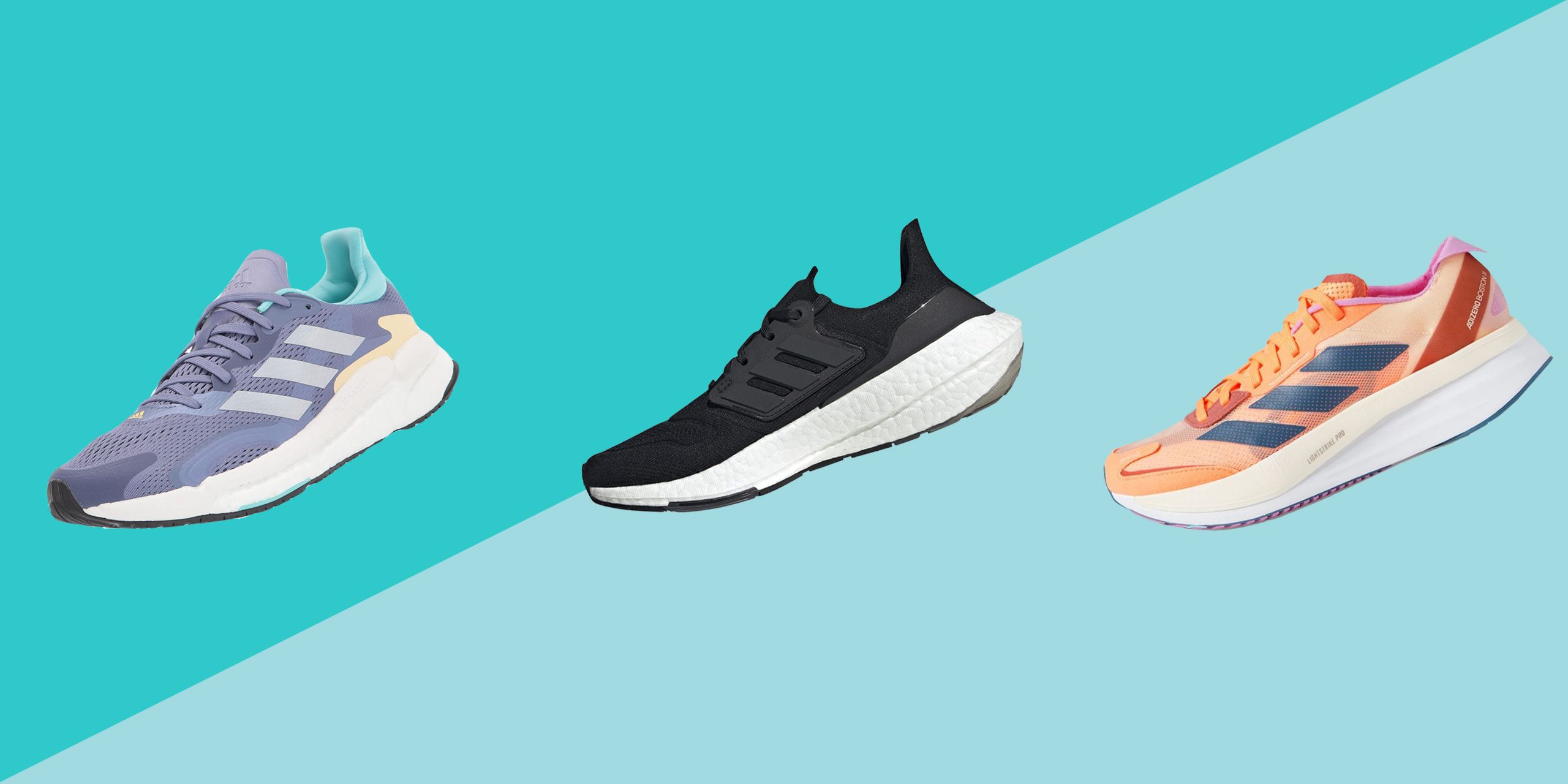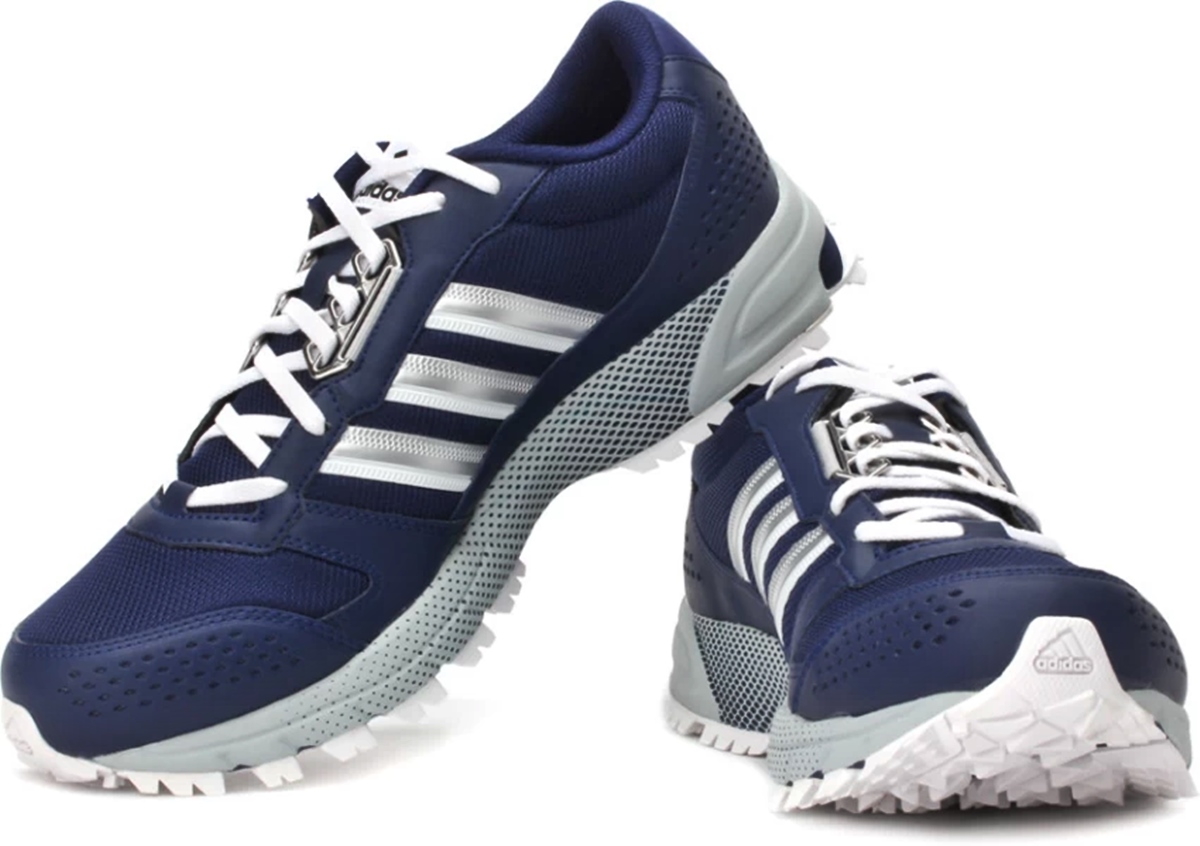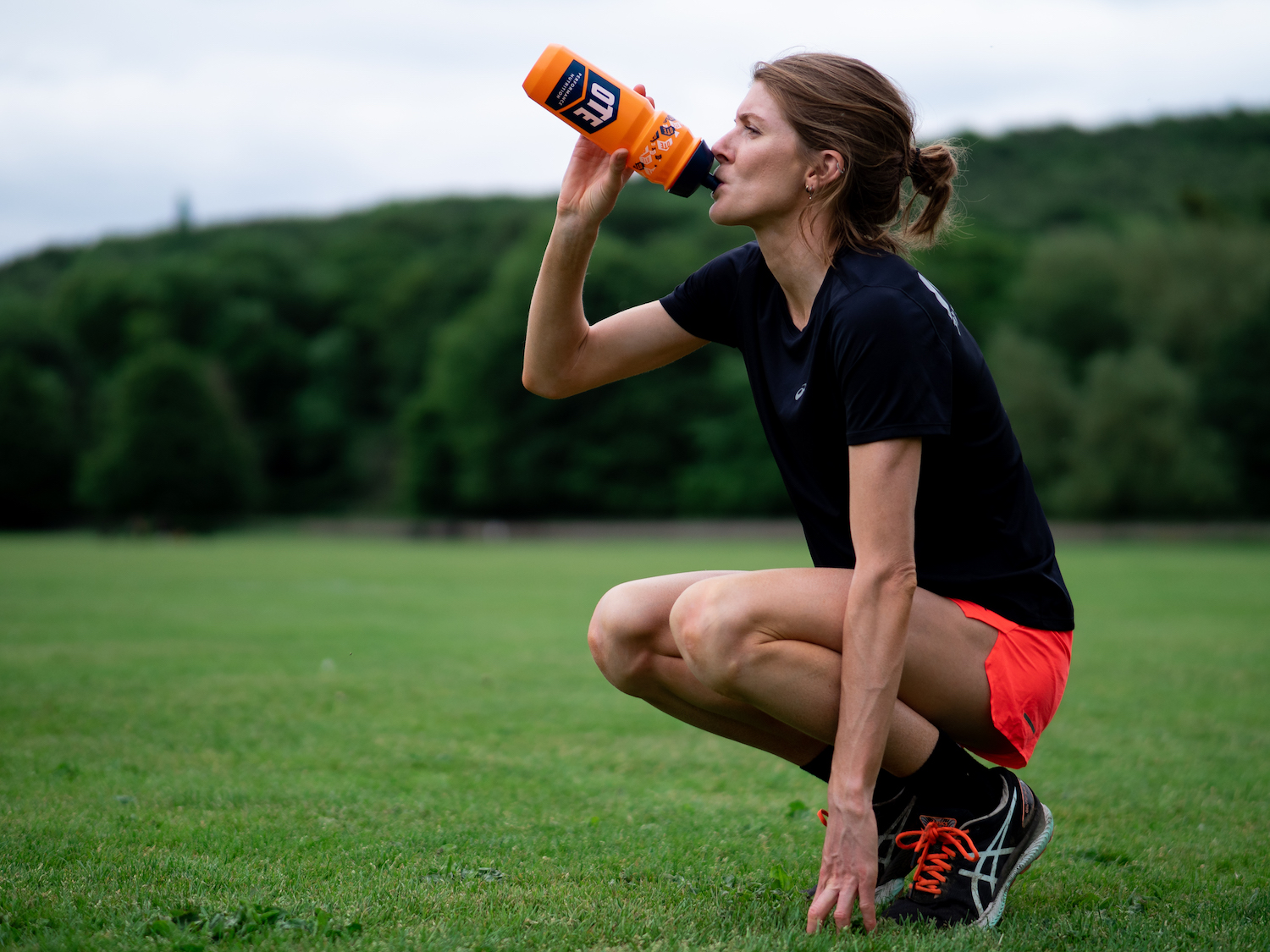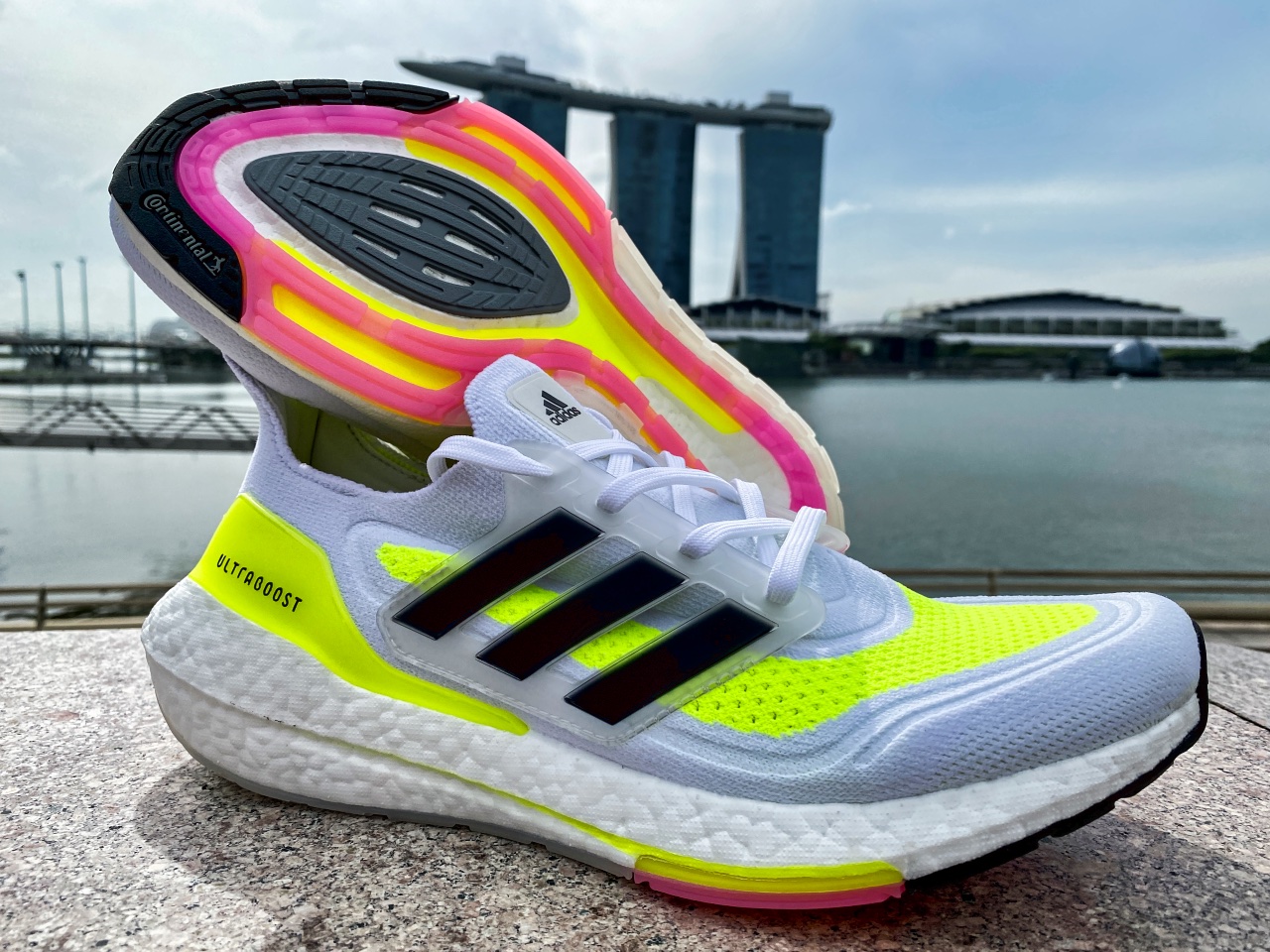

Featured
What Running Shoes Boost Speed
Modified: January 22, 2024
Looking for featured running shoes that boost speed? Check out our collection of high-performance footwear designed to enhance your running performance and help you reach your speed goals.
Introduction
When it comes to running, speed is a key factor that many athletes strive to improve. Whether you’re a professional sprinter or just aiming to beat your personal best, having the right running shoes can make a significant difference in your speed and overall performance. But with so many options available in the market, it can be overwhelming to choose the right pair.
In this article, we will explore the factors that affect running speed and delve into the features of running shoes that can help boost your speed. By understanding the impact of shoe weight, cushioning, flexibility, and drop, you will be equipped with the knowledge to make an informed decision when selecting your next pair of running shoes.
Before we dive into the specifics, it is crucial to highlight the importance of finding the right fit. Ill-fitting shoes can lead to discomfort, blisters, and even injuries. Therefore, it’s recommended to visit a specialized running store or get professionally fitted to ensure the perfect fit for your unique feet.
Now, let’s explore the factors that play a role in running speed enhancement and how your choice of running shoes can make a difference in your performance.
Factors Affecting Running Speed
Running speed is influenced by various factors that work together to propel you forward. Understanding these factors can help you identify areas for improvement and make informed decisions about your training and equipment. Here are some key factors that affect running speed:
- Biomechanics: Each runner has a unique biomechanical makeup that can impact their speed. Factors such as stride length, cadence, and running form can affect how efficiently you move and transfer energy. Working on your running technique can help optimize these factors and improve your speed.
- Strength and power: Developing strength in your lower body, especially in the muscles used for propulsion, can have a significant impact on your speed. Building strength through exercises like squats, lunges, and plyometrics can help enhance your running speed.
- Aerobic capacity: The ability of your cardiovascular system to deliver oxygen to your muscles is crucial for sustained speed. Improving your aerobic capacity through regular cardio workouts can enhance your endurance and speed.
- Training and conditioning: Consistent training and structured workouts can improve your running economy and efficiency. Incorporating speed work, intervals, and tempo runs into your training regimen can help optimize your speed.
- Mental focus and mindset: Your mindset and mental resilience play a significant role in your running speed. Developing mental strategies to stay focused, motivated, and push through fatigue can help you maintain your speed during races and training sessions.
While these factors are essential for improving running speed, one often overlooked aspect is the equipment you use, particularly your running shoes. The right pair of running shoes can provide the necessary support, cushioning, and responsiveness to enhance your speed. In the next sections, we will explore the key features of running shoes that can contribute to an increase in your running speed.
Understanding Running Shoe Features
When it comes to choosing running shoes that can boost your speed and performance, it’s crucial to understand the various features and technologies that are incorporated into their design. Here are some key features to consider:
- Outsole: The outsole is the bottom part of the shoe that comes into contact with the ground. Look for running shoes with a durable and grippy outsole that provides traction and stability, allowing you to push off efficiently and maintain your speed.
- Midsole: The midsole is the cushioning layer between the outsole and the upper part of the shoe. It plays a critical role in absorbing impact and providing energy return. Look for shoes with responsive and lightweight midsole materials such as EVA foam or proprietary cushioning technologies to optimize your speed.
- Upper: The upper part of the shoe covers and supports your foot. Look for shoes with a lightweight and breathable upper that allows for ample ventilation and a snug yet comfortable fit. A well-fitting upper will ensure minimal energy loss and enhance your speed.
- Arch support: The level of arch support needed varies from person to person. Some runners may benefit from shoes with added arch support or stability features, while others may prefer a more neutral shoe. Experiment with different levels of arch support to find what works best for you.
- Heel counter: The heel counter is the stiff part of the shoe that wraps around the back of your heel. It provides stability and support to prevent excessive pronation or supination during your stride. Look for a heel counter that is firm yet not too rigid, allowing for natural foot movement.
- Width and fit: It’s essential to find a shoe that matches the width and shape of your foot. Running shoes come in various widths, so make sure to try them on and choose a size that provides a snug and secure fit. A comfortable fit will prevent slippage and allow for optimal energy transfer during your runs.
It’s important to note that while these features are crucial, the ideal running shoe will vary depending on your foot type, running style, and personal preferences. Consider visiting a specialty running store where experts can assess your feet and running gait to recommend shoes that align with your specific needs.
Impact of Shoe Weight on Speed
The weight of your running shoes can have a significant impact on your speed and performance. While it may seem negligible, reducing the weight of your shoes can lead to improved running economy and faster running times. Here’s why shoe weight matters:
1. Energy expenditure: Lighter shoes require less energy to lift and propel forward with each stride. This means that your muscles don’t have to work as hard, allowing you to maintain a faster pace for longer periods without fatigue setting in.
2. Running economy: Running economy refers to how efficiently your body uses oxygen at a given speed. Studies have shown that lighter shoes can improve running economy, allowing you to use less energy and oxygen to maintain a specific pace.
3. Quick turnover: Lighter shoes promote a quicker turnover, meaning you’ll be able to increase your cadence and take more steps per minute. This leads to a shorter ground contact time and faster running times.
4. Injury prevention: Lighter shoes can reduce the impact forces exerted on your lower body. This puts less stress on your joints, muscles, and connective tissues, reducing the risk of overuse injuries such as shin splints or stress fractures.
However, it’s important to find the right balance between weight and cushioning. Some runners may require additional cushioning to protect against impact-related injuries, while others may prioritize lightweight shoes for speed. Consider your individual needs and preferences when choosing running shoes.
It’s worth noting that while lighter shoes can offer speed benefits, they may not be suitable for everyone. Runners with specific biomechanical needs, such as those with flat feet or a history of injuries, may require shoes with additional support, even if they add a bit of weight. Always prioritize proper fit, comfort, and support when choosing running shoes, and consider consulting with a running specialist to determine the best option for your specific needs.
The Role of Shoe Cushioning in Speed Enhancement
Shoe cushioning is a crucial factor to consider when looking to enhance your running speed. The right amount of cushioning can provide comfort, absorb impact forces, and improve energy return, ultimately leading to faster and more efficient running. Here’s how shoe cushioning plays a role in speed enhancement:
1. Impact absorption: When you run, your feet are subjected to repetitive impact forces with each stride. Cushioning in running shoes helps absorb these forces, reducing the stress on your muscles, joints, and connective tissues. This allows for a smoother, more comfortable run and enables you to focus on maintaining a faster pace.
2. Energy return: Running shoe cushioning materials, such as high-density foams or spring-like technologies, can store and release energy with each footstrike. This energy return propels you forward, giving you an extra boost in speed. Look for shoes with responsive cushioning that maximizes energy transfer, allowing you to maintain a faster pace with less effort.
3. Fatigue reduction: Running long distances or at high speeds can lead to muscle fatigue, impacting your speed and performance. Adequate cushioning in shoes can help reduce muscle fatigue by absorbing shock and reducing the stress on your muscles. This allows you to sustain your speed for longer periods without experiencing significant declines in performance.
4. Comfort and confidence: Comfort is essential for optimal performance. When your feet are comfortable and supported, you can focus on running efficiently and pushing your limits. Shoes with adequate cushioning provide a plush and responsive feel, boosting your confidence and allowing you to maintain a faster pace without discomfort.
It’s important to note that the amount of cushioning needed is subjective and varies depending on individual preferences and running style. Some runners prefer a more minimal cushioning for a more responsive and connected feel to the ground, while others may benefit from maximum cushioning for added comfort and shock absorption.
When choosing running shoes, consider your running goals, the type of terrain you’ll be running on, and your personal comfort preferences. Test different shoes and cushioning levels to find the right balance that enhances your speed and overall running experience. Consulting with a running specialist or trying shoes on a treadmill can provide valuable insights into how different cushioning options affect your running mechanics and speed.
Importance of Shoe Flexibility for Speed
When it comes to running speed, shoe flexibility is a crucial factor that often gets overlooked. The flexibility of your running shoes can have a significant impact on your efficiency, stride mechanics, and overall speed. Here’s why shoe flexibility is important for speed enhancement:
1. Natural foot movement: Flexible shoes allow for a more natural foot movement during the running gait. They promote a smooth transition from heel strike to toe-off, enabling your foot to flex and bend naturally. This natural movement minimizes energy loss and allows for a more efficient transfer of power, ultimately enhancing your speed.
2. Improved stride mechanics: Shoes with proper flexibility encourage a more efficient stride. They allow your foot to roll through each step and adapt to the ground, reducing the risk of overstriding or inefficient foot placement. This improved stride mechanics can help you maintain a faster pace with less effort.
3. Increased toe-off power: The flexibility of the toe area in running shoes plays a vital role in generating power during toe-off. When your shoes allow for proper toe flexibility, you can push off the ground more forcefully, propelling yourself forward and increasing your running speed.
4. Enhanced proprioception: Flexible shoes provide better feedback and proprioception, allowing your body to sense and respond to changes in the running surface. This increased sensory input helps you make quick adjustments and maintain balance, especially when running at high speeds or on uneven terrain.
However, it’s important to note that the flexibility of running shoes should be balanced. Too much flexibility may lead to instability and a lack of support, while too little flexibility can hinder natural foot movement and limit your speed potential.
Consider the type of running you do and the terrain you typically encounter. For faster, race-oriented runs, shoes with a slightly stiffer midsole and increased responsiveness may be preferable. For longer, slower runs or trail running, shoes with moderate flexibility can provide the necessary cushioning and support without sacrificing speed.
To find the right shoe flexibility, try shoes on different surfaces and mimic the movements you typically make during running. Pay attention to how the shoes bend and flex, and how they feel when you push off or maneuver around corners. Consulting with a running specialist can provide valuable insights and help you choose running shoes that cater to your specific needs and speed goals.
Analyzing Shoe Drop for Improved Running Performance
Shoe drop, also known as heel-to-toe drop or offset, refers to the difference in height between the heel and the forefoot of a running shoe. The shoe drop can play a significant role in your running performance, affecting your biomechanics, stride, and overall speed. Understanding the impact of shoe drop can help you choose the right running shoes for improved performance. Here’s what you need to know:
1. Impact on foot strike: Shoe drop affects how your foot strikes the ground during the running gait. Running shoes with a higher drop encourage a heel strike, where the first point of contact is the heel. This can be beneficial for runners who naturally have a heel strike pattern. Lower drop shoes, on the other hand, promote a midfoot or forefoot strike, which is generally associated with a more efficient running form.
2. Biomechanical alignment: Shoe drop also influences the alignment of your lower body during the running gait. Higher drop shoes tend to promote a more upright posture, while lower drop shoes encourage a slight forward lean. The alignment of your body affects your leverage and overall efficiency when running, which can impact your speed and performance.
3. Transition and adaptation: Switching to a shoe with a significantly different drop than what you’re accustomed to requires an adjustment period. Your muscles, tendons, and joints need to adapt to the change in foot strike and alignment. Abruptly switching to a drastically lower or higher drop shoe can potentially lead to discomfort or even injuries. It’s recommended to gradually transition to a different shoe drop to allow your body to adapt.
4. Personal preference and comfort: Shoe drop is not a one-size-fits-all parameter. Different runners have different preferences and comfort levels when it comes to shoe drop. Some runners may feel more comfortable and perform better in shoes with a higher drop, while others may prefer the responsiveness and agility of lower drop shoes. It’s essential to listen to your body and experiment with different shoe drops to find what works best for you.
When selecting running shoes, consider factors such as your running style, foot strike pattern, and body mechanics. Take into account any existing injuries or conditions that may influence your shoe drop preference. Consulting with a running specialist or trying on shoes at a specialty store can provide valuable insights and guidance to help you choose the ideal shoe drop for improved running performance.
Key Considerations for Choosing Speed-Boosting Running Shoes
Choosing the right running shoes can significantly contribute to your speed and overall performance. To find speed-boosting running shoes that align with your individual needs and goals, consider the following key factors:
- Fit and comfort: The most crucial factor when selecting running shoes is the fit and comfort. Shoes that are too tight or too loose can lead to discomfort, blisters, and even injuries. Ensure that there is enough room in the toe box, a snug fit around the midfoot, and ample support in the heel area. Try on different brands and models to find the perfect fit that allows for natural foot movement and optimal energy transfer.
- Weight: As previously discussed, the weight of the shoes can impact your running speed. Lighter shoes tend to offer better running economy and faster turnover. However, it’s essential to strike a balance between weight and cushioning to ensure adequate comfort and support.
- Cushioning and responsiveness: Look for shoes with cushioning that aligns with your preferences and running style. Some runners prefer maximum cushioning to absorb impact forces, while others prefer a more minimal cushioning for a responsive and connected feel to the ground. Ensure that the cushioning provides adequate shock absorption and energy return for optimal speed.
- Flexibility: The flexibility of the shoes affects your foot’s natural movement and stride mechanics. Shoes with appropriate flexibility allow for a smoother transition from heel strike to toe-off, enhancing your speed and running efficiency. Consider your running style and terrain when determining the level of flexibility that suits you best.
- Drop: The shoe drop can influence your foot strike and biomechanics. Higher drop shoes encourage a heel strike, while lower drop shoes promote a midfoot or forefoot strike. Choose a shoe drop that aligns with your natural running form and preferences for optimal speed and performance.
- Traction and durability: Running shoes should provide good traction to ensure stability and grip, especially if you often run on varied terrains or in wet conditions. Additionally, consider the durability of the shoes to ensure they can withstand regular wear and tear, providing long-lasting performance.
Remember that everyone’s feet and running styles are unique, so what works for someone else may not necessarily work for you. It’s essential to test out different shoes, preferably with the guidance of a running specialist, to find the optimal combination of fit, features, and performance for your individual needs.
Lastly, keep in mind that shoes alone will not guarantee speed improvement. Regular training, proper form, and a balanced overall fitness program all play crucial roles in enhancing your running speed. Your running shoes should complement your training efforts and provide the necessary support and comfort to help you achieve your speed goals.
Conclusion
Choosing the right running shoes is a crucial step in boosting your speed and overall running performance. By considering factors such as fit, weight, cushioning, flexibility, drop, traction, and durability, you can find the perfect pair to optimize your speed. However, it’s important to remember that finding the right shoes is just one piece of the puzzle.
Improving running speed goes beyond footwear. Training consistently, focusing on proper technique, and maintaining overall fitness all contribute to enhancing your speed. Your running shoes should complement these efforts by providing the necessary support, comfort, and performance features to help you reach your speed goals.
When selecting running shoes, take the time to try on different brands and models, seeking the advice of a running specialist if needed. Consider your running style, foot mechanics, and preferences to find the shoes that best suit your individual needs. Remember that what works for one runner may not work for another, so choose the shoes that feel right for you.
Investing in high-quality running shoes that prioritize speed and performance can be a game-changer in your running journey. Whether you’re a professional athlete or a recreational runner, the right pair of running shoes can give you that extra edge and help you achieve new personal records.
So, lace up your running shoes, hit the road or the track, and unlock your full speed potential. With the right footwear and consistent dedication to training, you’re on your way to reaching new levels of speed and running success.
